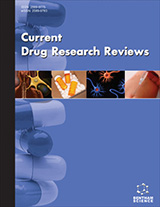
Abstract
Background: Diabetes mellitus (DM) affects the musculoskeletal system through its metabolic perturbations. Exercise modulates blood sugar levels and increases the body’s sensitivity to insulin in patients with DM.
Objective: This study aimed to investigate the potential effects of combined quercetin and coenzyme Q10 (CoQ10) supplements with or without exercise on the histological, biochemical and molecular structures of diabetic rat’s skeletal muscle
Methods: A total of 64 adult male albino rats were divided into six groups: control, trained nondiabetic, non-trained diabetic, diabetic rats treated with combined CoQ10 and quercetin, diabetic rats with treadmill training, and diabetic rats treated with treadmill training and CoQ10 and quercetin. Blood and skeletal muscle samples were obtained from all groups for routine histological examination and biochemical determination of cytokine levels and protein activities. Quantitative real-time polymerase chain reaction (qRT-PCR) and morphometric analysis of PAS and Bax expressions were also performed.
Results: Biochemical analysis revealed improvement in all studied parameters with combined Co- Q10 and quercetin than exercise training alone. Combined treatment and exercise showed significant improvement in all parameters especially interleukin 6 and malondialdehyde. Fibronectin type III domain-containing protein 5 (FNDC5) expression and irisin levels increased in all trained groups but combined treatment with exercise significantly increased their levels than exercise alone. Histological analysis revealed improvement after exercise or combined treatment; however, when exercise was combined with CoQ10 and quercetin, marked improvement was observed.
Conclusion: the combination of CoQ10 and quercetin could be promising in preserving musculoskeletal function in patients with DM concomitantly with physical exercise.
Keywords: Diabetes mellitus, skeletal muscle, quercetin, coenzyme Q10, exercise, irisin.
Graphical Abstract
[http://dx.doi.org/10.4239/wjd.v6.i4.598] [PMID: 25987957]
[http://dx.doi.org/10.1007/s00125-018-4729-5]
[http://dx.doi.org/10.1177/147323000803600315] [PMID: 18534132]
[http://dx.doi.org/10.2522/ptj.20160326] [PMID: 27909254]
[http://dx.doi.org/10.1155/2018/3839872]
[http://dx.doi.org/10.2147/DMSO.S51432] [PMID: 25092994]
[http://dx.doi.org/10.3389/fphys.2018.00112] [PMID: 29527173]
[http://dx.doi.org/10.1007/s00418-004-0696-7] [PMID: 15338229]
[http://dx.doi.org/10.3390/ijms140510497] [PMID: 23698776]
[http://dx.doi.org/10.1111/j.1467-789X.2008.00544.x] [PMID: 19207879]
[http://dx.doi.org/10.1089/ars.2013.5773] [PMID: 24450966]
[PMID: 30936597]
[http://dx.doi.org/10.1007/s12291-012-0255-2] [PMID: 24381432]
[http://dx.doi.org/10.1371/journal.pone.0060563] [PMID: 23593248]
[http://dx.doi.org/10.1074/jbc.M109.053942] [PMID: 20028987]
[http://dx.doi.org/10.1210/jc.2012-2749] [PMID: 23436919]
[http://dx.doi.org/10.1186/s12902-019-0479-8] [PMID: 31881940]
[http://dx.doi.org/10.3390/ijms161024673] [PMID: 26501271]
[http://dx.doi.org/10.1016/j.phrs.2004.06.002] [PMID: 15629256]
[http://dx.doi.org/10.1016/j.biopha.2018.10.130] [PMID: 30551359]
[http://dx.doi.org/10.1111/j.1526-4610.2007.00652.x] [PMID: 17355497]
[http://dx.doi.org/10.3390/ph203134] [PMID: 27713230]
[http://dx.doi.org/10.1016/j.nut.2007.12.007] [PMID: 18272335]
[http://dx.doi.org/10.1155/2017/3417306] [PMID: 29379801]
[http://dx.doi.org/10.1007/s11011-017-0037-x] [PMID: 28560538]
[http://dx.doi.org/10.4062/biomolther.2017.254] [PMID: 29462848]
[http://dx.doi.org/10.1007/s13105-011-0142-y] [PMID: 22234849]
[http://dx.doi.org/10.20463/jenb.2017.0013] [PMID: 29036763]
[http://dx.doi.org/10.5717/jenb.2014.18.2.225] [PMID: 25566459]
[http://dx.doi.org/10.3109/09513590.2013.864270] [PMID: 24397360]
[http://dx.doi.org/10.1177/104063870802000401] [PMID: 18599844]
[http://dx.doi.org/10.1111/j.1464-5491.2005.01728.x] [PMID: 16401324]
[http://dx.doi.org/10.1677/joe.0.1810419] [PMID: 15171690]
[http://dx.doi.org/10.1007/BF02255972] [PMID: 11173977]
[http://dx.doi.org/10.1152/ajpendo.00196.2016] [PMID: 27998959]
[http://dx.doi.org/10.1111/1440-1681.12762] [PMID: 28394420]
[http://dx.doi.org/10.5604/20831862.1093775] [PMID: 25187675]
[http://dx.doi.org/10.1007/s12020-012-9786-9] [PMID: 22948775]
[http://dx.doi.org/10.1111/j.1365-2249.2010.04240.x] [PMID: 20846161]
[http://dx.doi.org/10.1093/cvr/cvx011] [PMID: 28395009]
[http://dx.doi.org/10.1155/2012/982794] [PMID: 22175016]
[http://dx.doi.org/10.1016/j.bbi.2014.01.006] [PMID: 24434040]
[http://dx.doi.org/10.1002/cbf.1795] [PMID: 21887695]
[http://dx.doi.org/10.1002/1099-0461(2001)15:1<41::AID-JBT5>3.0.CO;2-Z] [PMID: 11170314]
[http://dx.doi.org/10.1016/j.nutres.2007.12.005] [PMID: 19083397]
[http://dx.doi.org/10.1016/j.freeradbiomed.2011.11.017] [PMID: 22172526]
[http://dx.doi.org/10.1155/2017/8386065] [PMID: 29318154]
[http://dx.doi.org/10.6061/clinics/2013(07)20] [PMID: 23917668]
[PMID: 24427343]
[PMID: 24551287]
[http://dx.doi.org/10.1186/1472-6882-8-21] [PMID: 18477407]
[http://dx.doi.org/10.1016/j.metabol.2008.03.003] [PMID: 18555853]
[http://dx.doi.org/10.4149/endo_2012_03_137] [PMID: 22808905]
[http://dx.doi.org/10.1615/CritRevOncog.v17.i3.80] [PMID: 22831161]
[http://dx.doi.org/10.1186/s12906-016-1530-1] [PMID: 28077129]
[http://dx.doi.org/10.1172/JCI32601] [PMID: 18188455]
[http://dx.doi.org/10.1111/j.1464-5491.2005.01649.x] [PMID: 16176203]
[http://dx.doi.org/10.1111/j.1399-5448.2010.00699.x] [PMID: 20860561]
[http://dx.doi.org/10.1152/japplphysiol.00368.2004] [PMID: 15358749]
[PMID: 24501562]
[http://dx.doi.org/10.1016/j.cmet.2012.12.012] [PMID: 23395166]
[http://dx.doi.org/10.1186/s12906-016-1064-6]
[http://dx.doi.org/10.5812/ircmj.31737] [PMID: 28144460]
[http://dx.doi.org/10.1371/journal.pone.0053318] [PMID: 23285277]
[http://dx.doi.org/10.1016/j.taap.2005.09.006] [PMID: 16226777]
[http://dx.doi.org/10.1002/ptr.2069] [PMID: 17221941]
[http://dx.doi.org/10.1111/bph.12194] [PMID: 23530660]
[http://dx.doi.org/10.1016/j.numecd.2012.01.013] [PMID: 22633794]
[http://dx.doi.org/10.1038/nature10777] [PMID: 22237023]
[http://dx.doi.org/10.1210/jc.2014-1437] [PMID: 25119310]
[http://dx.doi.org/10.1038/nrendo.2012.49] [PMID: 22473333]
[http://dx.doi.org/10.20463/jenb.2017.0008] [PMID: 29036766]
[http://dx.doi.org/10.1113/jphysiol.2013.263707] [PMID: 24000180]




























